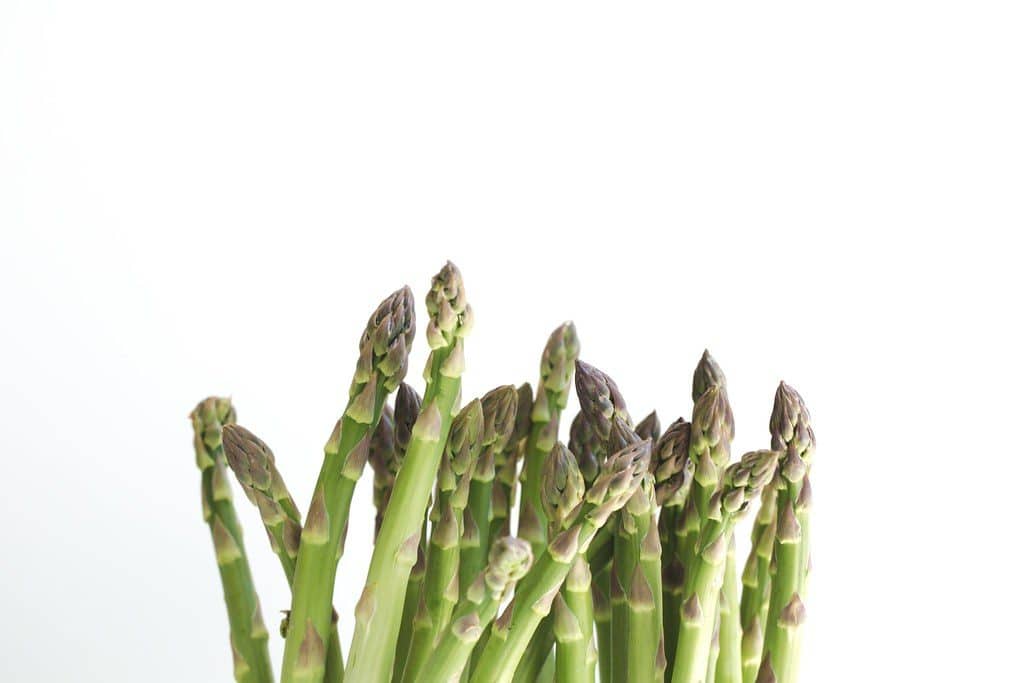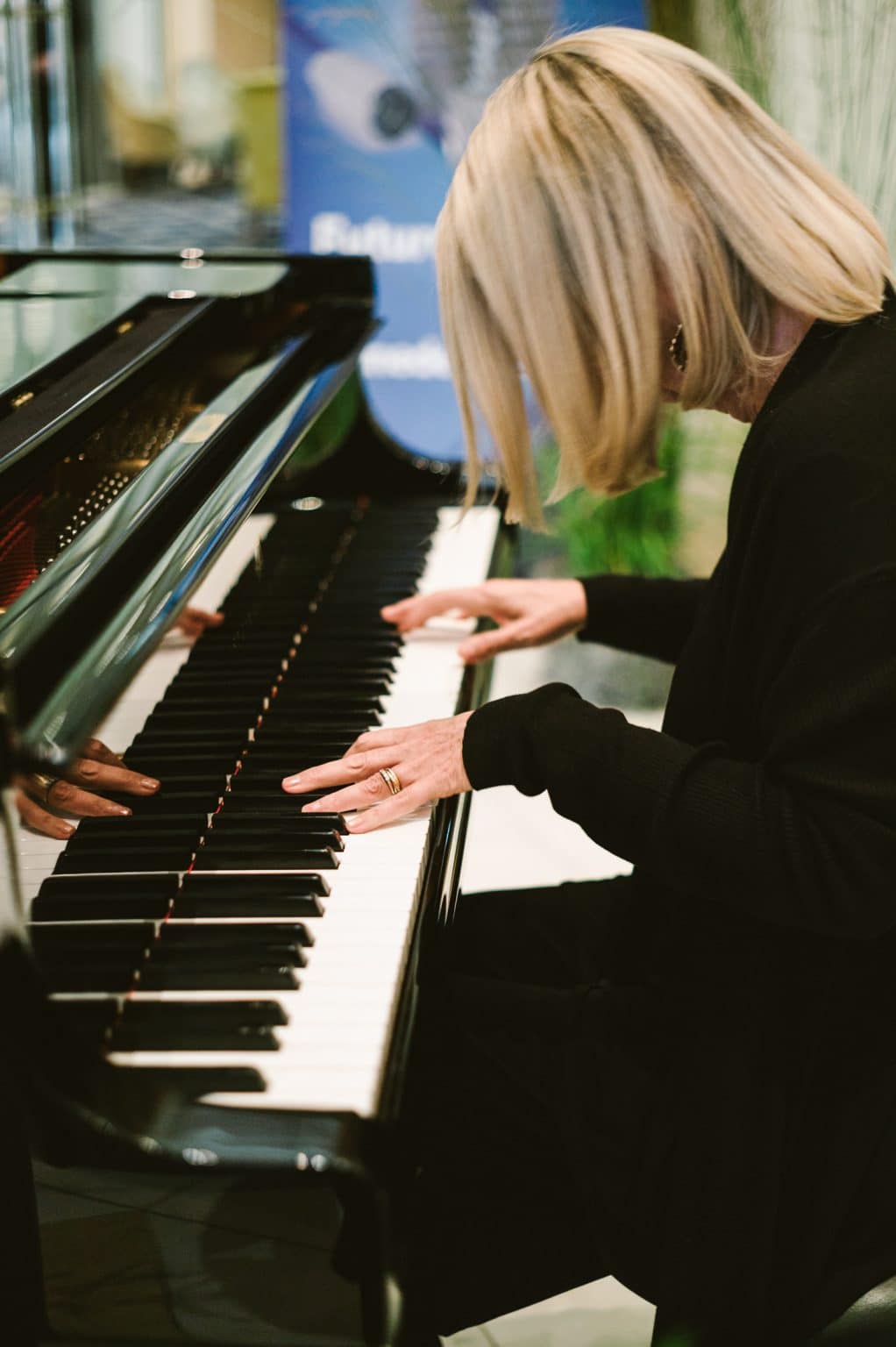Good grief, I say to myself. Are those things real vegetables?
New York City, 1986: One evening, on a break from my cocktail-piano job at the Grand Hyatt in Manhattan—a hotel that hosts Major League baseball teams, B-list celebrities, and an annual transvestite event called Night of a Thousand Queens—I notice an odd display in a glass showcase in the lobby. Inside the large window, built into a marble wall, is a handmade village of Asparagus People. Over 200 of them inhabit the village, each skinny green stalk hand-painted, shellacked, and dressed in a little outfit.
“Yep,” says José, a muscular housekeeping guy who overhears me while sweeping the granite floor. “I helped paint the little fuckers. I never wanna see another asparagus as long as I live.”
“Insane,” I say to the bass player from the lobby trio. “Truly the work of a madman.”
“Check it out,” he replies. “That one has a briefcase.”
“Back to work, pleeez,” says Mr. Prang, the German Food and Beverage manager who patrols the lobby. “Do not stare at zee veg-e-tables.”
“What’s hisproblem?” I ask, as Mr. Prang spins on his heels and clip-clops away from us. His cleated shoes make a lot of noise on the sparkling granite floor. No one likes Mr. Prang very much. When he’s not storming through the lobby, he stands behind a potted palm next to the crystal fountain and glares at anyone who crosses his path, almost like he’s looking for someone to fire.
On the next break the saxophone player joins us at Asparagus Village. “Whoa. What a trip. It’s like—uh—an international village. See that cat sitting on the motorcycle? He’s wearing a sombrero. Dig the brother asparagus hangin’ out the window—they painted his face black. And he’s wearin’ one of those little African hats. And that Asian asparagus chick on the lounge chair? She looks hot in that bikini. Yeow!”
Asparagus children play in the Asparagus Village sandbox, each with an expression of delight on its tiny face. In the back, asparagus policemen loom, wearing uniforms made of tiny scraps of brown fabric, with matching hats. The hats have badges.
“I told you,” says Mr. Prang. “Do not stare at zee veg-e-tables.”
I ignore Mr. Prang and spend every break peering into the village, thinking about the manual labor that must have gone into a display that’s pretty much ignored by most of the tourists lumbering through the lobby.
“Look, Steve, an Asparagus Village.”
“That’s nice, hon.” Night of a Thousand Queens might have captured the fancy of the overstuffed and bleary-eyed visitors parked in the Hyatt lounge, but Asparagus Village? Not so interesting. If you’ve come all the way to New York from Wisconsin, why spend your time checking out a hand-painted vegetable display when you can watch 1,000 guys dressed in prom gowns?
Every spring the village—with all-new costumes and themes—graces the Hyatt hallway. One year we enjoy Cowboys and Indians; the following season we’re treated to an amusement park (including a Ferris wheel full of stoned-looking asparagus girls wearing shorts and halter tops); the next time around we marvel at an asparagus Broadway show, complete with cast, pit orchestra, crew, and a chorus line of asparagus babes in skirts with red fringe. I fall in love with the whimsy and insanity of the display. But I never bother to ask why it’s there.
Then, as is often the case in the hotel business, tragedy strikes. April arrives and Asparagus Village fails to appear in the showcase window. Several weeks later most of the hotel musicians are fired, causing me to wonder if all along there has been a strange correlation between asparagus and lounge music. I move on to the next gig and forget all about my skinny green friends.
Bergisch Gladbach, Germany, 2009:Every April asparagus season begins in Germany, where I now work as a pianist at Schlosshotel Lerbach, a castle-hotel. The start of the season—trumpeted by the whoops of joy normally reserved for firework displays on the Rhine—marks the arrival of a two-month national frenzy. The Germans, anxious to tuck into that first bite of the stalky white “king of vegetables,” hover in the produce aisles of local markets, discussing recipes for cream of asparagus soup. Until recently it has been hard to find homegrown green asparagus here; the Germans prefer the version rendered white by denying it sunlight.
I’m caught in the madness. As guests order platters of asparagus accompanied by baby potatoes, thinly sliced ham, and an obscene amount of hollandaise sauce, I check my watch and wonder how much notice the chef needs to time my dinner with my break. This is what happens when you leave New York City and move to the German countryside. You stop smoking and drinking and start analyzing cooking times for vegetables. And if you’re smart, you make friends with the chef.
Asparagus Village at the New York Hyatt flops back into my mind. Suddenly, it all makes sense. Here I am at the piano, playing “Spring Can Really Hang You Up the Most” for my hollandaise-guzzling guests, and I remember Mr. Prang, a guy I haven’t thought of for decades. I can hear the cleats on his shiny black shoes, accompanied by the staccato rhythm of his accented English as he barked orders at all of us. He must have been the one who supervised the painting of the Asparagus People faces, coercing the baffled New York staff to draw miniscule eyebrow hairs onto asparagus stalks the size of a pinky finger. Maybe Mr. Prang helped with the task, muttering obscenities while painstakingly dressing each asparagus person. Maybe he was frustrated by the American lack of respect for his prized vegetable and dreamed of the day when he could escape to Europe in time for the start of asparagus season. Maybe he wasn’t such a bad guy after all.
Maybe he was lonely.
I can see him now, beckoning his army of hopeful Asparagus People, persuading them to break out of their glass cage and march, run, and finally waltz through the hotel lobby, dodging the sharp ankles and clodhopper feet of dazed tourists and drag queens, rushing for the exit, lunging toward the fresh air, determined not to get caught and squashed in the revolving doors of a different culture.
***
Robin Meloy Goldsby is a Steinway Artist. She is the author of Piano Girl; Waltz of the Asparagus People: The Further Adventures of Piano Girl; Rhythm: A Novel. New: Manhattan Road Trip, a collection of short stories about (what else?) musicians. Go here to buy Manhattan Road Trip.
New piano album: Home and Away, Goldsby’s latest solo piano album, directly from the artist. Robin’s music is available on all streaming platforms. If you’re a Spotify fan, go here to listen.
Personal note from RMG: Here’s a gorgeous playlist featuring my favorite “gentle music” players, including Ludovico Einaudi, Robin Spielberg, Christine Brown, Yiruma, Liz Story, et moi. I’m really proud of this playlist and hope it will bring you peace and joy. Right now would be a good time to listen. Twenty-three hours of solo piano! Click here to listen on Spotify or Apple Music.
Play the piano? Check out Robin’s solo piano sheet music here.

